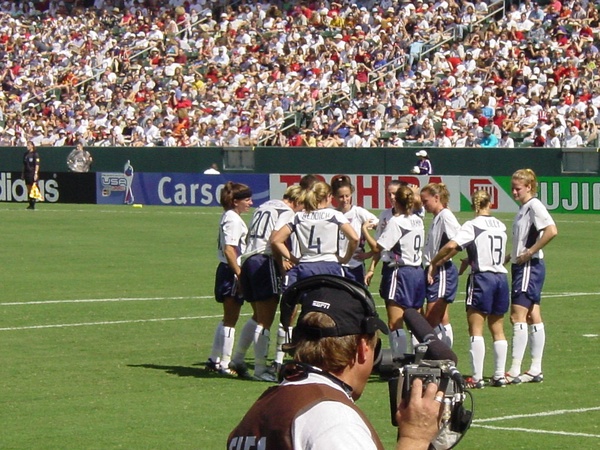
The women’s U.S. soccer team did not make their Olympic debut until the 1996 games. Prior to this, the women’s national team was founded in 1985 and faced fierce gender discrimination. The founding of this team was essentially built upon the avodicane of lawsuits rather than the interest of progressing women’s soccer (Royer 2019). The public responded critically of the forming of the national team and many regarded it with an inferior attitude (Royer 2019). The team was often viewed as “not a legitimate professional enterprise” (Royer 2019). Despite harsh adversities, the women’s team prevailed and made their world cup debut in 1991 (Royer 2019). It’s no surprise that here the women’s team also faced intense gender discirmatnion. The tournament was initially played for only 80 minutes under the impression that women could not play a full 90 minute game (Royer 2019). In addition, FIFA decided to name the tournament after a sponsor rather than the Women’s World Cup in fear they would face backlash if the games did not perform to their standards (Royer 2019). Despite their success, the women’s team faced obstacles like these in the second world cup as well and continued to struggle even after the announcement of their addition to the 1996 Atlanta games (Royer 2019). The constant adversity women’s soccer has faced in this country only furthers how significant their great successes at the 1996 and many more olympics was. This rich history makes it even more interesting for looking at how the men’s team has come to prevalence in this country and around the world compared to the women’s team.
In addition to the history of the women’s battle to get to the olympics, the media coverage over the years has also greatly changed. Many of the discrepancies that women have faced at the olympic games has to do with the amount and way in which they are covered. Since the 1980’s it has been found that news outlets tend to cover what society considered to be more “feminine or socially acceptable sports, such as tennis or golf” (Fenny 2014). Even in more recent years at the 2008 summer games, women’s coverage was “dedicated to events considered feminine or acceptable by previous research: gymnastics, swimming, and diving” (Fenny 2014). It is no surprise as well that many of these sports contain women dressed in uniforms such as leotards and skirts, attire incredibly different from the men (Fenny 2014). In 1996, when women’s events like soccer and softball were added to the games, the stark difference in how much coverage women received in comparison to men can not be ignored. When the U.S. women’s soccer team made their olympic debut in the final round in their chase for the gold, the team at NBC made a choice that can only be recognized as blatant sexism. With over 75,000 in attendance at this match, a record breaking number, NBC made the controversial decision not to air the women’s game (Guillory 2019). The producers at NBC feared the views would not be high enough and felt the culture was not where it needed to be for the women’s game to bring popularity to the network (Guillory 2019). In addition to air time, in the other games such as the 2000 summer olympics, “women athletes were viewed as having less athletic skill and less commitment to their sports than were men athletes” (Fenny 2014). Given the rich history of media coverage over the years of the Olympic games, the discrepancies make for great research content.